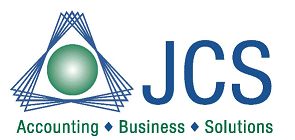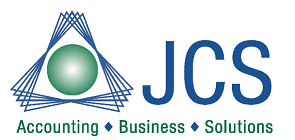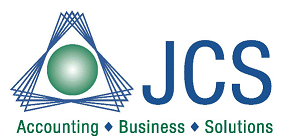Compare Accounting Software
Review Accounting Software
Complimentary Discovery Consultation
Top Accounting Software Questions To Consider
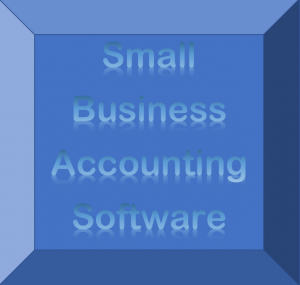
Reach out Today! Call for promotional pricing – send us an email – schedule a Free Demo!
Have you outgrown your current accounting software?
Accounting Software – Is your Accounting Software System hurting your Business? Consult with a system professional who can review your business needs and recommend the right solution to support your growing business. Once you have the right accounting software solution you will gain data analytics to support all the important decisions you need to make to drive your business forward. Review the most widely used accounting solutions to make an informed decision.
What Are Your Current Business Needs?
Understanding the data that makes up your businesses financials is arguably one of the most important aspects of running a successful business. Data mining is what it is called today. Serious business owners should know the importance of having accurate, up to date and complete information. Are you using your time or financial manager’s time wisely by creating mission critical reports in excel? You have the ability to advance your business and increase your bottom line with the appropriate accounting software but sometimes it is hard to choose.

Do you need to Reduce Redundant data entry?
One out of three businesses spends time entering the data to invoice customers, then they enter the time into an external payroll system and lastly they may be also re-keying time to manually track job costs. That means you’re spending triple the amount of money on completing these tasks when they could be handled in one place. Fat fingering of data and increasing the probability of errors is greater when you keep track of your information this way and are manually entering it in several places.
How can you eliminate Costly Errors?
Eliminate the errors and extra cost by investing in the right accounting software solution that has the tools to manage efficient operations. Automating these types of processes and streamlining the accounting aspect of your business will increase your bottom line. Business decisions cannot be made with confidence if you’re financial statements are inaccurate or if you have data in disparate systems. Utilizing appropriate accounting software is essential for your team to easily produce accurate reporting while staying up to date. When was the last time you measured productivity for employees and labor?
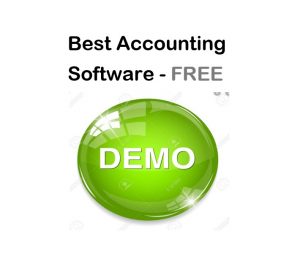
How to Discover the right solution – Start with a short list of items you can make much easier with accurate information when you are using a fully integrated system.
- Quoting
- Purchasing
- Inventory management
- Job / Project Profitability
- Scheduling
- Shop Floor Control
- Shipping
- EDI
- Web Site Integration
Bank Reconciliation is more simplistic and effective with the right accounting software. Say goodbye to missing deductions, forgetting bank charges and those pesky interest fees you once forgot when manually handling your reconciliations. Automating this process and reconciling monthly is no longer a huge burden. Process your credit card payments inside your accounts receivable and provide customers with great experiences by making their payment process easier by selecting a link to pay by credit card via email.
Accounting Software – steps to free up resources!
Save time and man hours to produce company historical financials. Accounting software is refreshingly educational when it comes to comparing prior years activities. It also allows you to extract the data into a spreadsheet for sorting. Are you able to pull the last 5 years of historical data with a few clicks of a mouse? Can you easily analyze inventory turns or thank your most profitable customers?
Data entry time should be minimal. Most banks now offer the ability to sync your bank statements into your accounting software. The ease of not having to manually enter in each month’s transactions will save a ton of time leaving more for you to do what you do best! Most accounting software comes with the option to not only process payroll but with the click of a button file all the required forms and tax payments at the end of each payroll, month, quarter and year. Eliminate the time and effort it takes to run payroll through another system and then manually record journal entries and bank check payments.
Forecasting
Reliability and accurately managing customers and vendors are essential to any business. Accounting software keeps history and aging recorded. Vendor invoices input are paid on time allowing for cash flow and projections to be done with ease. Accounts receivable is up to date so you’ll know what’s outstanding at any given moment.
In summary, if you aren’t utilizing the appropriate accounting software for your business you could be spending quite a bit of extra money. Consult with one of our professionals to find the best accounting solution for your business. There are several options for accounting software to choose from.
For more information on accounting software give us a call 800-475-1047
Tips to Balance Your Checkbook in any accounting software system
UNDERSTANDING THE DIFFERENCE IN YOUR ACCOUNTING SOFTWARE SYSTEM CASH BALANCE AND YOUR CHECK BOOK REGISTER BALANCE. What you have in the bank is not what you have available to spend. I would also add Cash flow to this
Learn how to record interest earned and credit adjustments
If you earn any interest or the bank makes any credit adjustments you will need to record them in your checkbook register. Interest earned typically appears on the front of your bank statement or may be a separate statement altogether depending on how many checking accounts you have. Credit adjustment amounts could be for items such as bank corrections. Interest earned and credit adjustments will be added to your balance.
Review how to record service charges, debit adjustments
If you have any service charges you will need to record them in your checkbook register. These types of adjustments could be for charges such as monthly service charges, per check charges, ATM transaction charges and non-sufficient funds fees. Debit adjustments are if there are additional withdrawals on your bank statement, other than checks, are charged for the amount actually drawn. This includes ATM withdrawals, Debit Card transactions and any automatically deducted transactions like car payments, insurance payments, loan and utility payments. Service charges and debit adjustments will be deducted from your balance.
Best Glossary of Simple Accounting Software Terms
Accounts Payable: The amount owed to others for services or merchandise received by the organization.
Accounts Receivable: The amount owed to the organization for services or merchandise provided to others.
Accrual-Basis Accounting: A system of financial record keeping in which transactions are recorded as expenses when they are incurred (i.e. when a bill is received for merchandise or services provided to the organization) and as income when it is earned (i.e. when services or merchandise is provided by the organization, or the organization receives a commitment of a contribution) rather than when cash is paid or received. The alternative is Cash-basis accounting.
Accrued Expense: Costs of operation that have accumulated, but are not yet due or payable.
Accrued Interest: Interest costs that have accumulated, but are not yet due or payable.
Allocation: A method of accounting that divides expenses among different program, administrative, and fundraising categories based on a formula that recognizes the use of the resources such as use of the facility or staff time.
Allowance for Doubtful Accounts: An amount reflecting the portion of the accounts receivable which the organization reasonably believes it may not collect.
Advanced Features to consider
Possible one of the most confusing aspects of creating an integrated accounting software and manufacturing management system is about how inventory is kept.
In larger, industrial-strength Enterprise Resource Planning (ERP) systems, there is usually a clear distinction between finished goods inventory (often referred to as “distribution inventory” or sales inventory”) and the raw materials inventory. Indeed, ISO standards and other “best practices” dictate that the finished goods inventory and the raw materials inventory must be kept physically isolated and controlled separately. ERP systems respect this need for isolation.
Education on “best practices” should be considered along with a formal way of controlling inventory (a controlled stockroom). More than one of our clients, using a “take what you need” inventory control system, have wondered why their manufacturing operation seemed to be so horrible out of control. The answer is, obviously, “You must start by controlling the inventory.”
Often “Inventory Control” is listed among its many features. Of equally good chance is that the inventory control module of their accounting system deals only with the sales distribution side of the house, not the manufacturing side.
Many manufacturing companies make the mistake of trying to use their accounting system’s inventory module to help them control their raw materials inventory. Work in process (WIP), and sub-assembly production. Only after typing in thousands of raw material part numbers and attempting to perform the most basic manufacturing processes do they discover how ill-equipped their software is to perform the required tasks.
Discover Accounting Software Plus Distribution Software
Writing software to control a sales distribution inventory is relatively simple; however the software needed to effectively control the inventory for a multi-level product structure is quite complex. Accounting software vendors usually take the easy route and include a module which addresses sale distribution inventory. Rarely do they tackle the thorny job of manufacturing inventory control.

Find Accounting Software Plus Manufacturing Software
Regardless of the size of your client’s company and the complexity of their manufacturing process, we urge you to enforce a strict set of part numbering conventions and inventory control procedures. If your client is small and operating on a shoe-string, this demand may not make you friends, but it is one you must make. Bad habits are hard to break – but in this case time never heals. If your client has only 50 raw materials and 10 sub-assemblies, insist that each have a part number and each be stored in a controlled stockroom. If the client allows free access to the inventory, all your efforts to manage their manufacturing business will be for naught. Why have integrated manufacturing solution.
- Improve Visibility
- Increase Efficiency
- On-time Delivery
- Enhanced Product Quality
- Reduce Costs
- Real Time Collaboration
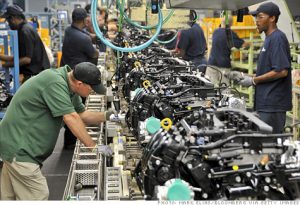
While you have their attention and you are in the process imposing new policies and procedures, establish once and for all how raw materials, sub-assemblies, and finished goods are to be segregated.
In general, only the items being sold belong in an accounting system’s inventory control database. Obviously, this includes the finished products, but may also include a quantity of selected raw materials or sub-assemblies being made or sold as spare parts.
Locate Field Service options to consider
- Plan to have technicians invoice and collect in the field
- Currently using Preventative Maintenance Agreements
- GPS capabilities
- Industry
- Work Zones
- Workflow standardization
- Minimizing paperwork
- Quicker invoicing
- Dynamic scheduling and the ability to take urgent tasks
- Cost Reduction with Fuel Control and Route Optimization
- Parts and Inventory Management
- Equipment Tracking
- More Accurate Task Matching
- Sage Timeslips Support

- Training classes
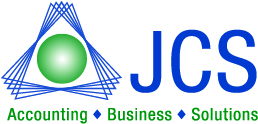
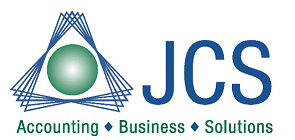
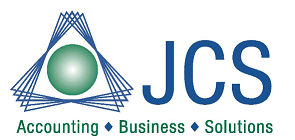 Book your free Discovery Call Today! 800-475-1047
Book your free Discovery Call Today! 800-475-1047 